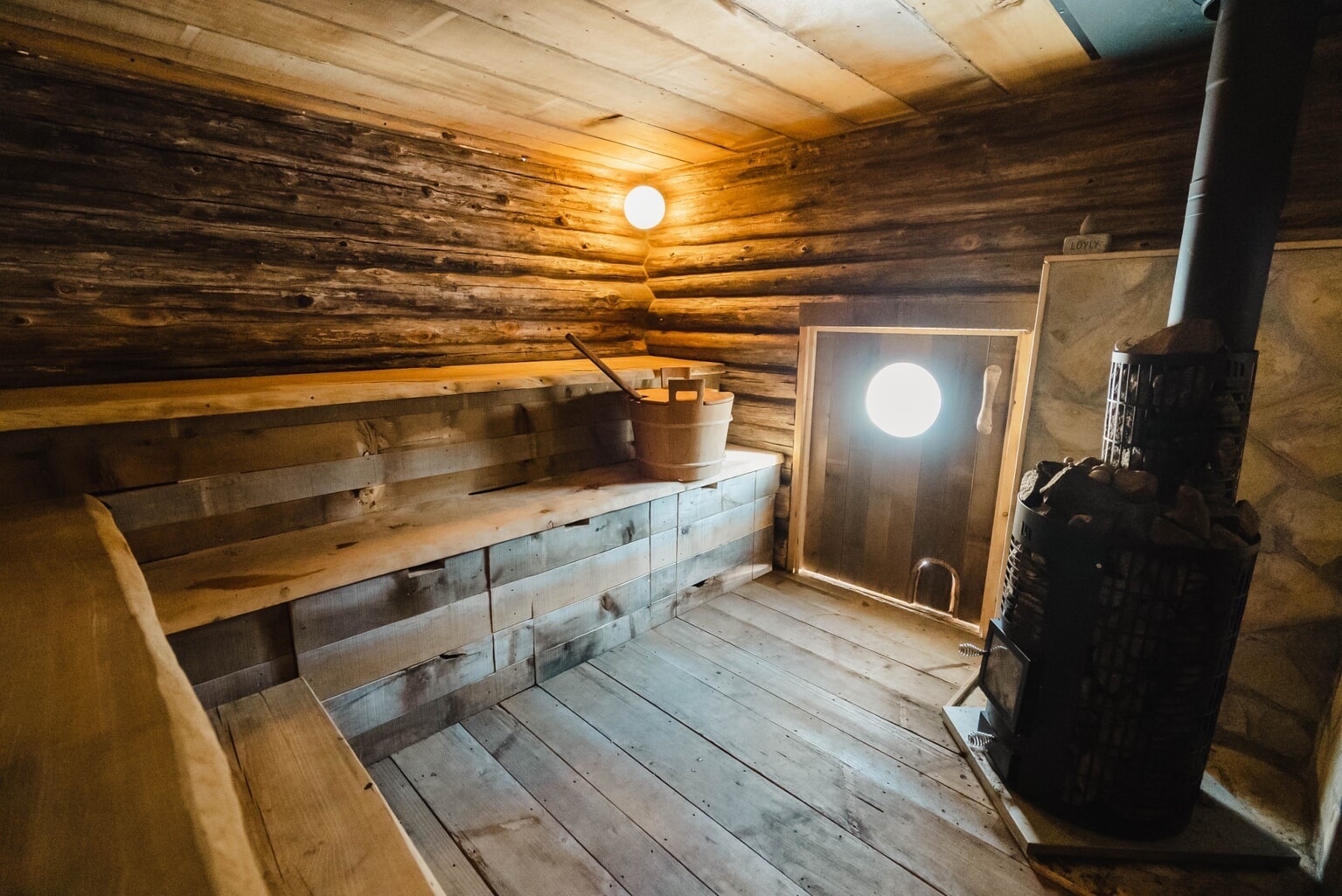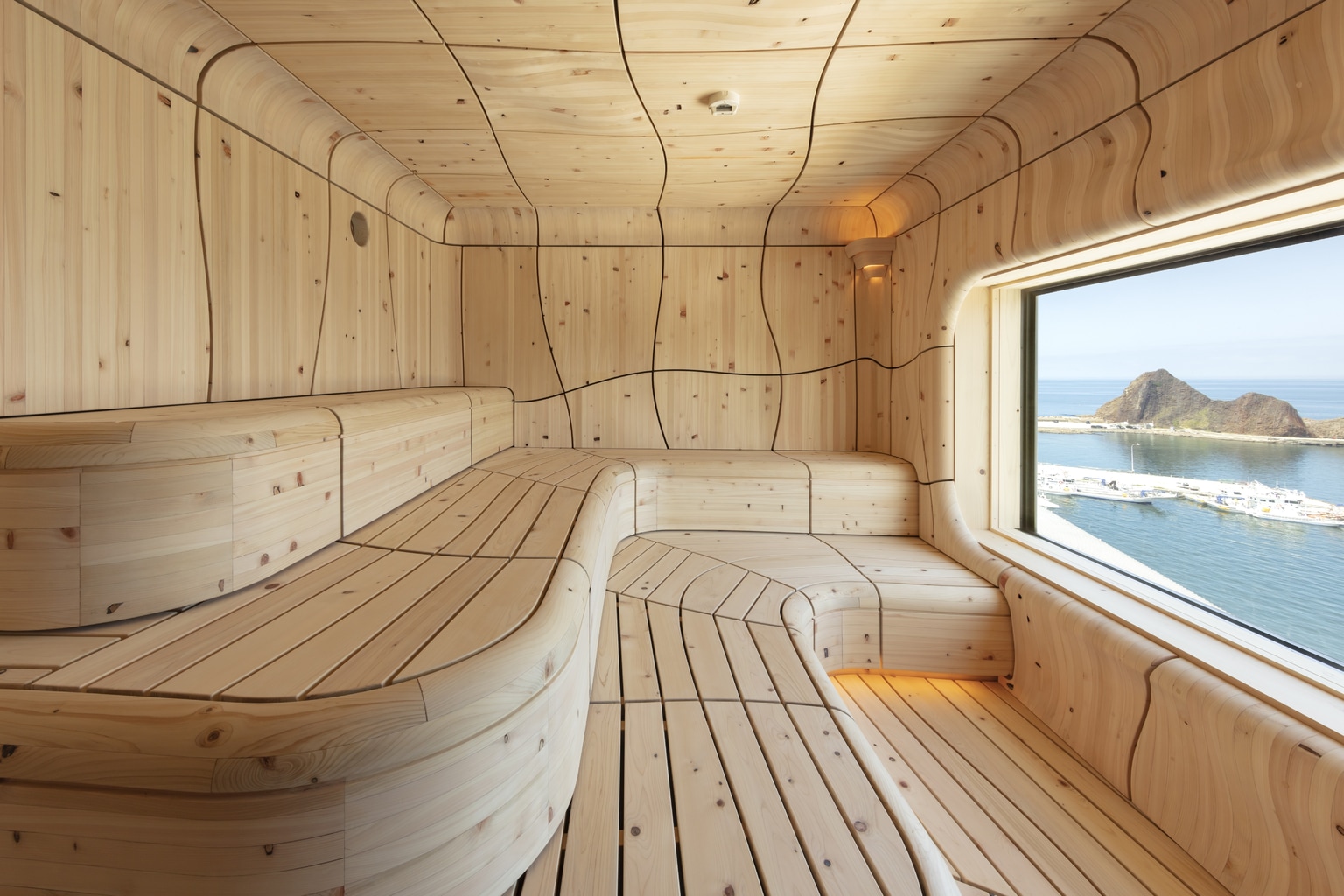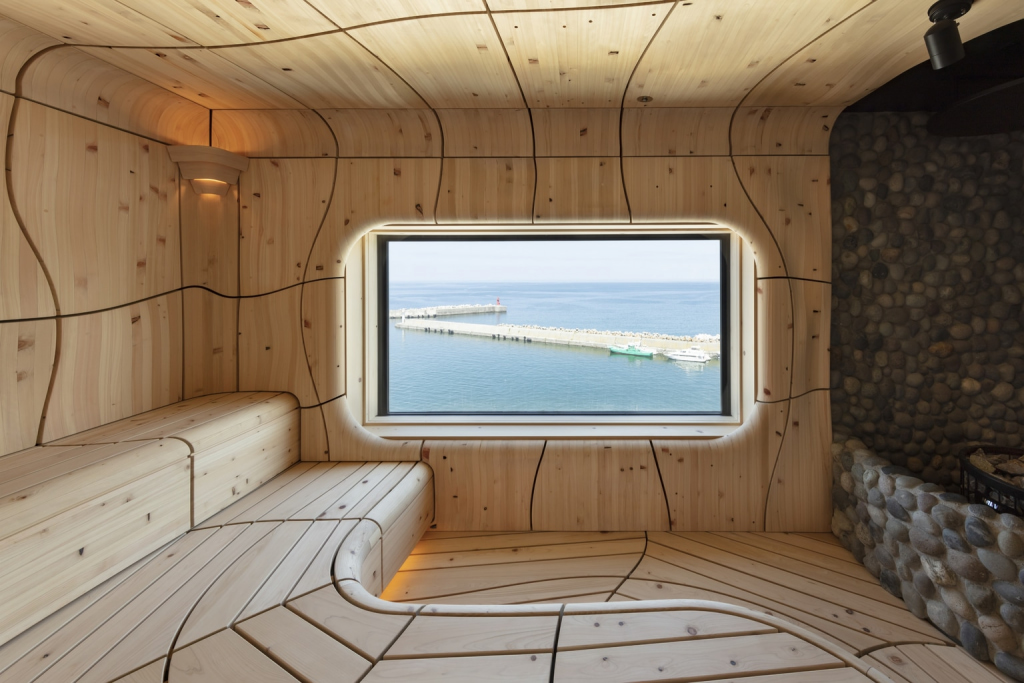In the past couple of years, the sauna has seen a surge in punters, with even art collectives such as teamLab taking note. The creative group’s recent Rinkan Sauna, which gave “saunners” (people who regularly frequent saunas) the opportunity to enter their own impressively-lit sauna, was extended due to its popularity.
Saunas in Japan have been around since 1957, with the first being introduced in Ginza, Tokyo. According to Mikio Wakabayashi of the Japanese Sauna Spa Association, saunas received a popularity boost during the 1964 Tokyo Olympics thanks to the Finnish athletes, mainly amongst middle-aged men.
Today, they come in many varieties at stand-alone facilities or as one part of a spa or onsen. Some you’ll find in large, spacious rooms in a day spa in the city. Others are in cozy rooms in a ryokan in the countryside, or a hut in the mountains.

The popular Lamp “back to basics” loyly sauna

The popular Lamp “back to basics” loyly sauna
Everybody Wants to Sauna
Until the 2010s, sauna-going was seen as an old-man pursuit, dominated by images of sweaty salarymen or intimidating yakuza crouched sweating around a hot room. Yet this image has changed in the past decade. One of the reasons for this was a column in a web magazine by Katsuki Tanaka. It progressed into a manga in 2016 titled Sado (meaning “the way of the sauna” in Japanese). The following year saw the introduction of sauna rating site Sauna Ikitai.
Sauna Ikitai sees registered users review sauna facilities. As of 2022 there were over 9,000 registered users on the site. Even during the Covid pandemic, the rise of the sauna seems unstoppable.
While much of the leisure industry has been hit by the constant restrictions, the sauna industry has continued to do well. In Nagano, the Lamp guesthouse — which has ‘here is small Finland’ on its website showcasing its rare wood-burning loyly sauna — is booked up for months in advance. The company even expanded during the pandemic, opening a new facility in Oita Prefecture.
TTNE, a self-proclaimed ‘Brand for Saunners, by Saunners’ produces sauna-related streetwear and saunas for clients across Japan. One of its most recent projects was renovating the Shiretoko resort in Northern Hokkaido.
TTNE produced a breathtaking space with a feature window overlooking the North Sea by collaborating with Tokyo-based sound artist Hor Rhythm, wood makers and interior design company Artistry. The concept behind its sauna brand is to appeal to a younger audience as much as the diehard sauna fans.

Shiretoko, produced by sauna brand TTNE
Sauna Hotspots and Events on the Rise
Tokyo and Ikebukuro neighborhoods are becoming hotspots for exclusive hotels with private saunas included in the room price. Hotels such as the centrally located Solo Sauna Tune, Karumaru and Hotel Hisoca are in high demand.
Pop-up saunas have seen a huge surge in popularity too. Sauna Festivals, where ticket holders can experience different types of saunas in one place have been on the rise across the country. From Shimokitazawa’s recent Sauna Town festival – 10 different types of pop-up saunas right in front of the train station – to Chiba’s sold out Sea and Sauna Shack, sauna festivals are in high demand.
And it’s easy to see the appeal: after visiting a sauna, you can feel relaxed, invigorated and cleansed. The science behind this is simple: as you enter a sauna, your blood pressure rises, your heart rate increases and your blood vessels dilate.
As people search for new ways to relax, a sauna is a great way to get that natural high. In a world that sees people drinking and smoking less than in previous generations, sauna popularity looks set to only increase.









